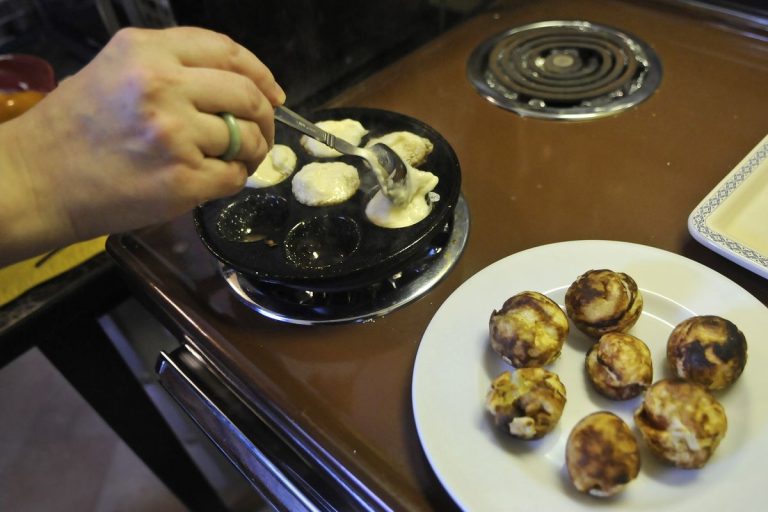Parmesan Cream Sauce: History, Recipe, and Health Insights
Parmesan cream sauce has roots deeply embedded in Italian cuisine. Italians first introduced Parmigiano-Reggiano, a hard, granular cheese, in the 13th century. They grated this cheese over pasta to enhance flavor. Eventually, Italian chefs began experimenting with cream-based sauces. They combined Parmigiano-Reggiano with cream, butter, and garlic to create a rich, smooth sauce. You can still find the traditional sauce in many Italian homes and restaurants today, often served with fettuccine or gnocchi.
Evolution into a Global Staple
As Italian immigrants spread across the globe, they brought their culinary traditions with them. The Parmesan cream sauce gained popularity beyond Italy in the mid-20th century. American chefs embraced this creamy, flavorful sauce, adapting it for various dishes, such as chicken Alfredo and creamy soups. Today, you can find it in kitchens around the world. Restaurants offer this versatile sauce in diverse recipes, showing its evolution from a regional specialty to an international favorite.
Key Ingredients for Parmesan Cream Sauce
Variations of Cheeses Used
Parmesan cheese, particularly Parmigiano-Reggiano, serves as the foundation for your Parmesan cream sauce. It’s renowned for its nutty, savory flavor, making it a versatile choice. Some recipes incorporate other cheeses to enhance the taste or texture.
- Grana Padano: This cheese offers a somewhat milder flavor compared to Parmigiano-Reggiano. It’s an excellent substitute due to its similar aging process.
- Pecorino Romano: This cheese adds a sharper, saltier kick. It’s often used in combination with Parmesan to enrich the sauce.
- Asiago: This cheese introduces a smooth, creamy texture. It’s perfect if you prefer a slightly less intense flavor.
Including these cheese variations ensures diverse taste profiles while maintaining the essence of authentic Parmesan cream sauce.
The Role of Cream in the Sauce
The cream is integral to the Parmesan cream sauce. It contributes to the sauce’s rich, smooth consistency, allowing the cheese to melt uniformly.
- Heavy Cream: With a fat content of about 36-40%, heavy cream delivers a luxurious thickness. It’s most commonly used for its ability to resist curdling when heated.
- Half-and-Half: With around 10-12% fat, half-and-half provides a lighter texture. It’s useful for a slightly thinner sauce without compromising richness.
- Milk: While less traditional, milk can be used for a lighter option. However, the consistency will be noticeably thinner, and additional thickening agents may be necessary.
By understanding the role of cream, you can adjust the richness and texture of your Parmesan cream sauce to suit your preferences.
Cooking Techniques
Preparing the Base
Start with melting butter in a pan over medium heat to create a base for your Parmesan cream sauce. Once the butter melts, add finely minced garlic and sauté for about 1-2 minutes until fragrant, ensuring not to brown the garlic. Next, slowly pour in heavy cream, half-and-half, or milk, based on your desired richness. Stir consistently to combine the ingredients thoroughly.
Achieving the Perfect Consistency
Bring the mixture to a gentle simmer, allowing it to thicken while stirring. Add freshly grated Parmesan cheese gradually, continuing to stir until fully melted and incorporated. For a thicker sauce, let it simmer longer; if the sauce becomes too thick, add small amounts of milk to reach the desired consistency. Adding a pinch of nutmeg enhances the flavor and smoothness of the sauce.
Popular Dishes Featuring Parmesan Cream Sauce
Classic Fettuccine Alfredo
Fettuccine Alfredo remains one of the most iconic dishes using Parmesan cream sauce. The dish originated in early 20th-century Italy and has since gained international popularity. To prepare, cooked fettuccine noodles get tossed in a rich Parmesan cream sauce, creating a silky, decadent pasta. Enhance this classic dish by adding grilled chicken, shrimp, or sautéed mushrooms. For added depth, a sprinkle of fresh parsley or cracked black pepper works well.
Innovative Modern Uses
Parmesan cream sauce extends beyond traditional pasta dishes. Modern applications showcase its versatility:
- Cauliflower Gratin: Roast cauliflower florets, then top with Parmesan cream sauce and breadcrumbs, baking until golden and bubbly.
- Creamy Baked Eggs: Pour sauce into ramekins, crack eggs on top, and bake until the whites set while the yolks remain runny.
- Parmesan Cream Pizza: Spread sauce on pizza dough instead of tomato sauce, layering with toppings like prosciutto, arugula, and cherry tomatoes.
- Stuffed Chicken Breasts: Fill chicken breasts with spinach and ricotta, cover in Parmesan cream sauce, and bake.
- Vegetable Lasagna: Substitute traditional tomato sauce with Parmesan cream sauce for a rich, cheesy flavor in vegetable lasagna.
Try these modern uses of Parmesan cream sauce to elevate your culinary creations and bring new flavors to your table.
Health Aspects
Nutritional Value
Parmesan cream sauce offers several nutritional benefits. Parmesan cheese is a significant source of protein, providing about 10g per ounce. It’s rich in calcium, essential for bone health, with 338mg per ounce. This cheese also contains vitamins like B12 and minerals such as phosphorus and zinc. When combined with cream, the sauce’s caloric content increases, making it energy-dense. However, it is high in saturated fats, with around 5g per ounce of Parmesan cheese and additional fats from the cream. Moderation helps balance the benefits with the dietary fats and calories.
Dietary Considerations
Parmesan cream sauce might not suit all dietary needs. It’s high in lactose, making it unsuitable for those with lactose intolerance if no enzyme supplements are used. For those monitoring fat intake, the sauce’s high-fat content can be concerning. Opting for lighter cream or milk can reduce fat content. Its sodium level is also significant, at about 360mg per ounce of Parmesan, impacting those on low-sodium diets. Substituting with low-sodium cheese varieties can help mitigate this. For vegans, dairy-free alternatives like cashew cream and nutritional yeast provide a similar taste profile while adhering to vegan dietary restrictions.
Conclusion
Parmesan cream sauce offers a delightful blend of rich flavors and creamy texture, making it a versatile addition to many dishes. Whether you’re enhancing a classic pasta or experimenting with modern recipes, this sauce is sure to impress. Remember to balance its indulgence with mindful consumption, considering its nutritional aspects. By exploring alternatives and adjustments, you can enjoy Parmesan cream sauce while catering to various dietary needs. So, get creative in the kitchen and let this delectable sauce elevate your culinary creations.






